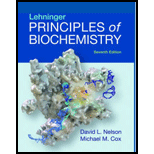
Concept explainers
(a1)
To determine: The relation between MRS and ∆G˚ of the binding reaction.
Introduction: Various compounds taste sweet. Some of them sweet more, while some of them sweet lesser. The sweetness is related to their structures and interaction with taste bud receptors. Molar relative sweetness (MRS) is the measure of sweetness of the compound relative to sweetness of sucrose.
(a2)
To determine: Whether the more negative value of ∆G˚ will correspond to a higher or lower MRS.
Introduction: Various compounds taste sweet. Some of them sweet more, while some of them sweet less. The sweetness is related to their structures and taste bud receptors on which the compounds bind. Molar relative sweetness (MRS) is the measure of sweetness of the compound relative to sweetness of sucrose.
(b)
To explain: The uses of predicting the sweetness of molecules by computer model instead of a human or animal-based taste assay.
Introduction: Various compounds taste sweet. Some of them sweet more, while some of them sweet lesser. The sweetness is related to their structures and taste bud receptors. The assay that requires less time to generate valuable result would be convenient and desirable.
(c)
To determine: The AH-B groups in each of the given molecules when the length of a typical single bond is about 0.15 nm
Introduction: Various compounds taste sweet. Some of them sweet more, while some of them sweet lesser. The sweetness is related to their structures and taste bud receptors.
(d)
To determine: The two objections to the statement that molecules containing an AH-B structure will taste sweet are to be determined.
Introduction: Various compounds taste sweet. Some of them sweet more, while some of them sweet lesser. The sweetness is related to their structures and taste bud receptors.
(e)
To determine: The two molecules out of given molecules that can be used to explain the difference in MRS and ∆G˚ and their relation to AH-B model.
Introduction: Various compounds taste sweet. Some of them sweet more, while some of them sweet lesser. The sweetness is related to their structures and taste bud receptors. Molar relative sweetness (MRS) is the measure of sweetness of the compound relative to sweetness of sucrose.
(f)
To determine: The two examples that can be used to argue the AH-B model is unable to explain the observed differences in sweetness.
Introduction: Various compounds taste sweet. Some of them sweet more, while some of them sweet lesser. The sweetness is related to their structures and taste bud receptors. Molar relative sweetness (MRS) is the measure of sweetness of the compound relative to sweetness of sucrose.
(g)
To determine: Whether need to test the model against a different set of molecules from the set it was trained on.
Introduction: Various compounds taste sweet. Some of them sweet more, while some of them sweet lesser. The sweetness is related to their structures and taste bud receptors.
(h)
To determine: The resulting error in MRS values as it has found that the predicted ∆G˚ values for the test set differed from the actual values by, on average, 1.3 kcal/mol.
Introduction: Various compounds taste sweet. Some of them sweet more, while some of them sweet lesser. The sweetness is related to their structures and taste bud receptors. Molar relative sweetness (MRS) is the measure of sweetness of the compound relative to sweetness of sucrose.
Want to see the full answer?
Check out a sample textbook solution
Chapter 1 Solutions
Lehninger Principles of Biochemistry
 BiochemistryBiochemistryISBN:9781319114671Author:Lubert Stryer, Jeremy M. Berg, John L. Tymoczko, Gregory J. Gatto Jr.Publisher:W. H. Freeman
BiochemistryBiochemistryISBN:9781319114671Author:Lubert Stryer, Jeremy M. Berg, John L. Tymoczko, Gregory J. Gatto Jr.Publisher:W. H. Freeman Lehninger Principles of BiochemistryBiochemistryISBN:9781464126116Author:David L. Nelson, Michael M. CoxPublisher:W. H. Freeman
Lehninger Principles of BiochemistryBiochemistryISBN:9781464126116Author:David L. Nelson, Michael M. CoxPublisher:W. H. Freeman Fundamentals of Biochemistry: Life at the Molecul...BiochemistryISBN:9781118918401Author:Donald Voet, Judith G. Voet, Charlotte W. PrattPublisher:WILEY
Fundamentals of Biochemistry: Life at the Molecul...BiochemistryISBN:9781118918401Author:Donald Voet, Judith G. Voet, Charlotte W. PrattPublisher:WILEY BiochemistryBiochemistryISBN:9781305961135Author:Mary K. Campbell, Shawn O. Farrell, Owen M. McDougalPublisher:Cengage Learning
BiochemistryBiochemistryISBN:9781305961135Author:Mary K. Campbell, Shawn O. Farrell, Owen M. McDougalPublisher:Cengage Learning BiochemistryBiochemistryISBN:9781305577206Author:Reginald H. Garrett, Charles M. GrishamPublisher:Cengage Learning
BiochemistryBiochemistryISBN:9781305577206Author:Reginald H. Garrett, Charles M. GrishamPublisher:Cengage Learning Fundamentals of General, Organic, and Biological ...BiochemistryISBN:9780134015187Author:John E. McMurry, David S. Ballantine, Carl A. Hoeger, Virginia E. PetersonPublisher:PEARSON
Fundamentals of General, Organic, and Biological ...BiochemistryISBN:9780134015187Author:John E. McMurry, David S. Ballantine, Carl A. Hoeger, Virginia E. PetersonPublisher:PEARSON





